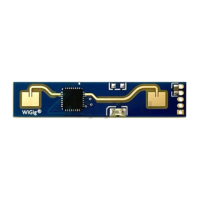
Do you have a question about the Hi-Link HLK-LD2410 and is the answer not in the manual?
| Product Name | Hi-Link HLK-LD2410 |
|---|---|
| Category | Control Unit |
| Output Interface | UART |
| Operating Voltage | 5V |
| Operating Temperature | -20°C to 60°C |
| Detection Modes | Motion detection |
| Communication Protocol | UART |
| Operating Frequency | 24.125 GHz |
| Detection Angle | 60° |
Lists the core features of the HLK-LD2410, including plug-and-play, sensing distance, and detection angle.
Compares millimeter wave radar technology with other sensing solutions, highlighting benefits like environmental adaptability.
Specifies the physical dimensions of the module, including size and pin hole details.
Details the function and purpose of each pin on the HLK-LD2410 module for proper connection.
Illustrates a standard circuit setup for integrating the LD2410 module into electronic systems.
Explains adjustable parameters like detection distance and sensitivity for fine-tuning module performance.
Describes the PC software for testing, configuring, and visualizing data from the LD2410 module.
Explains how radome design impacts radar wave reflection, transmission, and the sensor's overall performance.
Outlines key structural and dimensional considerations for effective radome design for radar applications.
Lists suitable materials for radomes, providing their properties relevant to 24.125GHz operation.